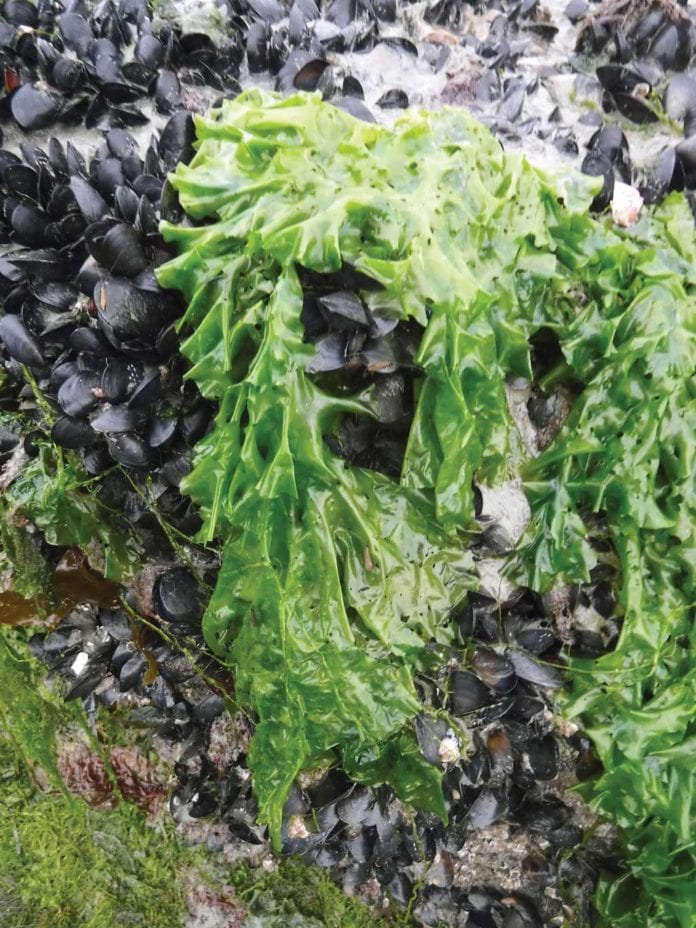By Stewart Grant
Alaska Department of Fish & Game
Alaska’s rocky shores are covered with seaweeds of all kinds, and at low tide, they can be seen lining the shore in bands.
Brown rockweed grows on upper intertidal rocks, then green and red seaweeds farther down and finally kelps at the waters edge on a minus low tide.
Harvests of seaweeds are a major industry with a value of about $5 billion worldwide. Asian countries, chiefly China, Korea and Japan, lead the way in seaweed production.
Sugar kelps can be as much as three to six times more productive than sugarcane, which is a fast growing plant itself.
Seaweeds are eaten as dried plants in many parts of the world. Seaweeds have high contents of iodine and potassium and are used in dietary supplements and as food when dried, especially in Asia. The use of seaweed has grown in recent years and now many local stores sell packets of dried green seaweed for snack time.
The largest demand for seaweeds is for compounds that are used in many common products. Compounds in kelps (alginates) and some red seaweeds (carageenen and agar) are used in a variety of products. For example, alginates are used as thickeners in ice cream, jelly, salad dressing and tooth paste. Surprisingly, these compounds are also used to make long-lasting foam on beer.
There is now interest in developing seaweed farms in Alaska, because Alaska’s waters are highly productive and relatively pristine compared to shorelines in many other areas.
“While the State encourages the development of its natural resources, that development must maintain the sustainability of the natural system,” said Bill Templin in the Gene Conservation Laboratory at the Alaska Department of Fish & Game.
He points out that the State of Alaska is unique among the 50 states in having a clause in its constitution stating that ‘natural resources should be developed under the sustained yield principle.’ No other state has this starting point for managing their natural resources.
“Protecting wild populations is a fundamental responsibility when developing farming in Alaska,” Templin said.
The reason is that wild populations are adapted to local environments and may harbor stores of genetic diversity that support the ability of these species to change and adapt as the environment changes.
The first step in protecting wild species is to understand how populations are structured along the coast. The ADF&G genetics laboratory specializes in using molecular markers to help detect where one population ends and another starts. This information provides the scale at which local adaptations may exist.
The North Pacific Research Board has provided funds to study of the genetic population structures of seaweeds, and volunteers across the state are helping to collect seaweeds for the study.
“The major outcome of this study will help to establish guidelines for developing a sustainable seaweed industry in Alaska,” Templin said.
One concern is to avoid the mixing of different genetic strains of seaweeds by transplanting plants from distant populations. Adaptation to local environmental conditions is important for maintaining healthy populations.
The next time you eat a bowl of ice cream or put pour dressing over your salad, think seaweed.
At the next low tide take a closer look at the rocks along the Cordova breakwater and see how many different seaweeds you can identify.
Stewart ‘Stew’ Grant is a fisheries biologist at the Alaska Department of Fish and Game in Anchorage, who is associated with the genetics laboratory. He was in Cordova to collect samples of seaweeds for a project to better understand the genetic population structure of seaweeds in Alaska.















